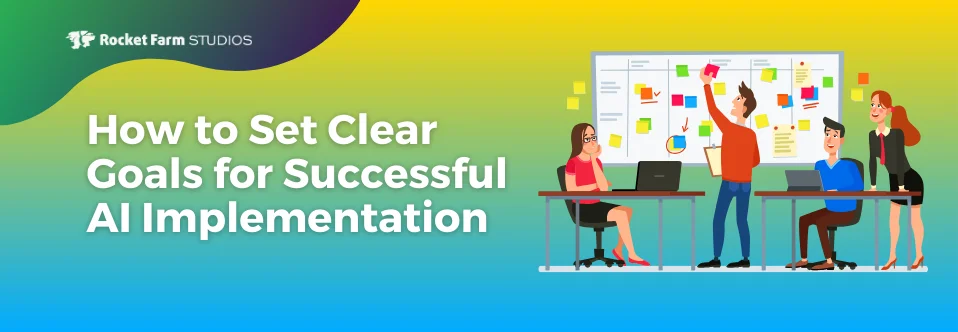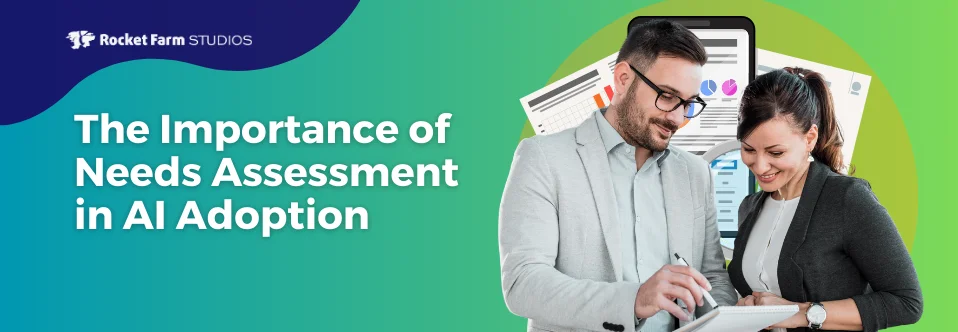When integrating artificial intelligence (AI) into your business, it’s crucial to recognize that AI is not a simple solution that can be plugged in without consideration. Successful AI integration demands a strategic approach grounded in well-defined objectives. This goes beyond the common belief that AI can work miracles immediately upon deployment.
In a follow-up to insights shared in a previous blog, it’s essential for every business to first pinpoint where AI can be most effective. This involves examining potential AI impacts at three different levels: the business level, affecting revenue and growth; the customer level, influencing products, services, and customer experiences; and the employee level, which involves operational workflows.
However, one crucial aspect often overlooked is the setting of precise AI goals after identifying these opportunities.
The Challenge of Defining AI Goals
The task of defining AI goals can be daunting. Implementing AI to capitalize on identified opportunities does not guarantee straightforward benefits. This process involves extensive collaboration across the organization, requiring inputs from C-suite executives to frontline employees, tech specialists to customers. Such collaboration ensures that the goals are aligned across all levels of the organization.
AI solutions are not quick fixes. They require substantial effort and time to yield tangible business improvements. For example, while AI can handle vast amounts of data to provide specific insights, the ultimate business decisions based on these insights must be carefully managed to avoid misinterpretations or biases.
Inclusive Goal-Setting through Stakeholder Engagement
Achieving success in setting AI goals demands the active participation of various stakeholders across the organization. This group includes IT professionals, data scientists, operational staff, and strategic decision-makers. Engaging this diverse set of stakeholders not only aids in establishing realistic and pertinent goals but also promotes a smoother implementation process. By involving key personnel early in the planning stages, potential resistance and operational challenges can be identified and addressed promptly, paving the way for a more effective AI adoption.
Crafting Specific and Measurable AI Goals
Transitioning from broad intentions to tangible outcomes in AI initiatives necessitates that goals be specific, measurable, achievable, relevant, and time-bound (SMART). This structured approach ensures that the progress of AI implementations can be quantitatively assessed and effectively managed.
For instance, rather than a vague goal to “improve operational efficiency,” a more actionable objective would be “to reduce production downtime by 20% within one year through the implementation of predictive maintenance algorithms.” This clarity not only sets a clear target but also provides a definitive timeline for achieving measurable success.
Additionally, it is crucial to consider both direct and indirect costs associated with AI implementations when setting goals. Transparently addressing these costs helps in aligning budgetary allocations and expectations across the organization. Establishing goals that quantify improvement from ‘X’ to ‘Y’ by ‘Z’ timeframe is particularly effective.
For example, aiming to “increase sales leads by 30% over six months through enhanced data analytics” not only specifies a clear metric and deadline but also underscores the strategic deployment of resources to achieve this financial objective.
This format ensures all stakeholders are aware of the expected financial and operational impacts, facilitating more informed decision-making and resource management.
Implementing Realistic AI Objectives
Effective AI goals should be specific and directly linked to real-world applications. For businesses new to AI or with limited technical resources, it is advisable to start with small, manageable goals. An example could be using AI to analyze and predict inventory needs to prevent stockouts.
This focused approach can lead to broader benefits over time, such as enhanced customer satisfaction and increased profitability through tailored marketing strategies and product recommendations.
A Step-by-Step Approach to AI Adoption
Starting with modest, clearly defined goals can set a foundation for more complex AI applications as your experience grows. It’s also crucial to secure widespread support within the organization. The success of AI initiatives heavily depends on the people who will interact with the technology.
Ensuring that all team members understand and appreciate the potential benefits of AI is essential to the technology’s successful integration and the achievement of its intended goals.
Continuous Evolution in AI Objectives
Given the dynamic nature of AI technology, it is crucial to recognize that objectives established at the outset of a project might require adjustments as circumstances change. Organizations should cultivate a culture of continuous learning and adaptability, enabling them to modify their goals in response to new insights and advancements in technology.
This flexible approach allows companies to stay aligned with the latest AI capabilities and industry standards, ensuring that AI implementations remain effective and relevant over time.
Final Thoughts
As businesses venture into the realm of artificial intelligence, the importance of clearly defined, actionable objectives cannot be overstressed. The journey of integrating AI into business processes is not merely about deploying technology but about driving meaningful change that can significantly enhance operational efficiency and customer satisfaction.
This requires a detailed understanding of the company’s current capabilities and a visionary outlook to foresee how AI can transform various aspects of the business. By focusing on specific, measurable, and timely goals, organizations can navigate the complexities of AI adoption more smoothly and with greater confidence.
At Rocket Farm Studios, we understand the critical role that a well-thought-out AI strategy plays in achieving business success. We recognize that each organization’s journey is unique, and we are committed to helping our clients craft bespoke AI implementation strategies that are not only aligned with their specific business objectives but are also adaptable to the rapidly evolving technological landscape.
Whether it’s enhancing data-driven decision-making or optimizing customer interactions, we are here to guide you through every step of your AI adoption journey.








